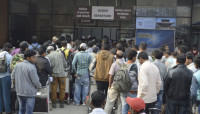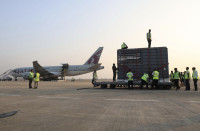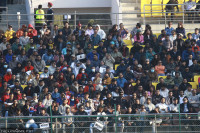Columns
Does everything need a business plan?
In a democratic society, we need people committed to specific ideas more than business plans.
Pratyoush Onta
Every time someone mentions “business plan,” I think about two of the major projects of my life—the discussion series run by Martin Chautari and the academic journal Studies in Nepali History and Society (SINHAS). When I was involved in expanding the work of the mangalbare discussion group of Chautari and in founding SINHAS, both in 1995, no one asked me what the business plans for these projects were. If anyone had asked, I would have had to tell them they did not exist. And if the existence of such plans were a prerequisite for these projects, they would have never taken off to become important platforms for public discourse and academic publications related to Nepal. I wrote about the discussion series in an earlier column of the Post (“Chautari guff at 32”, November 10, 2023).
The idea of SINHAS emanated from a spontaneous proposal made by our publisher, Madhab Lal Maharjan, to me when I was visiting his shop, Mandala Book Point, some day in 1994. I made no immediate commitment to him. I returned to the University of Pennsylvania (UPenn) in late 1994 to complete my doctoral dissertation. The final decision to start SINHAS was made in the summer of 1995 following conversations between Mary Des Chene, Mark Liechty and myself in Philadelphia and Baltimore. Lazima Onta-Bhatta was invited to join the team.
We decided that each journal volume would consist of two issues—each about 200 pages thick—published in June and December of each year. Then, Madhab and we made a simple oral agreement: The editors would prepare the “camera-ready” copy of each issue, and he would publish, distribute and sell it. The first issue of SINHAS was published in August 1996.
A “foolish” decision
Reflecting on the decision to start SINHAS, I would say that it represented the collective “foolishness” of the four founding editors. How so?
Think about the “standing” of the founding team in 1995: Here were four people, two of whom were early career post-PhD researchers, and the other two doctoral students still writing their dissertations. The most senior of the lot, Mary, had finished her PhD in anthropology from Stanford University in 1991 with a dissertation titled “Relics of Empire: A Cultural History of the Gurkhas, 1815-1987.” She published an article in the Himalayan Research Bulletin in 1992 and a second one in the South Asia Bulletin in 1993. In 1995, apart from teaching, she was crafting articles for other journals and edited volumes. She had published at least two book reviews in academic journals by then, and might have even peer-reviewed a manuscript or two for some journals.
The second post-PhD researcher in our team, Mark Liechty, obtained his PhD in anthropology from UPenn in December 1994, writing a dissertation titled “Fashioning Modernity in Kathmandu: Mass Media, Consumer Culture, and the Middle Class in Nepal.” He had spent the first six months of 1995 as a postdoctoral fellow at the International Institute for Asian Studies in Leiden, the Netherlands. While there, he finished the final draft of his article, “Kathmandu as Translocality: Multiple Places in a Nepali Space,” published in 1996 in the edited volume Geography of Identity.
Before going to Leiden, Mark finished another article on youth identities and the experience of modernity in Kathmandu, published in 1995 in the edited volume Youth Cultures: A Cross-Cultural Perspective. Hence, by mid-1995, although two of his articles in two separate edited volumes were in various stages of the pre-press process, Mark had not even submitted an article to a journal for review. He published a book review in 1993 but does not remember doing any official peer reviews for any journal until then.
In July 1995, I was still a year away from finishing my PhD in history at UPenn. During the hot summer of 1995 in Philadelphia, I was writing my dissertation, “The Politics of Bravery: A History of Nepali Nationalism.” Some months earlier, I had published a full-length article under the title “Rich Possibilities: Notes on Social History in Nepal” in Contributions to Nepalese Studies, which was the most prominent journal of Nepal Studies at that time. That submission had not undergone a rigorous peer review process but was finely copy-edited before publication. By then, I had published reviews of academic books in three journals. Still, I had not done any official peer review of any article manuscript written by others for any journal.
In the early summer of 1995, Lazima, the fourth founder of SINHAS, was still doing her anthropological fieldwork in Kathmandu on the subject of street children. At that time, she had not published anything in academic journals. Later that year, she returned to the US to begin writing her doctoral dissertation, which eventually got submitted to Cornell University in 2000 under the title “Street Children’s Subcultures and Cultural Politics of Childhood in Nepal.”
So here was a group of four researchers—two early post-doctoral ones and two doctoral students—who had certainly read thousands of journal articles between them during their graduate training but whose collective experience of writing for academic journals was limited to just three published full-length articles in total! Three members of this group had never done an official peer review of any article manuscript submitted to any journal. None of them had worked as a proper editorial assistant in any academic journal team previously.
In other disciplinary domains, early career researchers cut their journal editing teeth by working first as junior members of the editorial collective of some journals. Later on, they are offered associate and eventually full editorial positions in those same or other journals. But here was our team, deciding to establish a new journal of Nepal Studies without such experience. Surely, we were well read in Nepali history and society, but collectively, we had minimal knowledge of the intricate processes that generate academic journals. Hence, the decision to establish SINHAS was a “foolish” reflection of the collective youth and naivety of the four founding editors.
Portable lessons
Given its current standing among practitioners of Nepal Studies, I would have to say that SINHAS has done pretty well in its 29 years of existence despite not having a “business plan.” We have learnt to run the journal while securing and editing good articles that enhance our collective understanding of Nepali history and society. That raises this question: Does every project in life need a business plan? I clearly don’t think so. For many aspects of how a democratic society ought to function, we probably need individuals committed long-term to specific ideas and projects more than business plans for them. Such individuals should have the freedom to “foolishly” launch public-serving projects without worrying about business plans. I am glad that back in 1995, I did not have to respond to folks who were married to the idea of business plans for everything, whether a discussion forum or a journal. There should be ample room for spontaneity, public-serving naivety and experiential serendipity in any society that likes to call itself loktantrik.




 19.12°C Kathmandu
19.12°C Kathmandu













%20(1).jpg&w=300&height=200)

